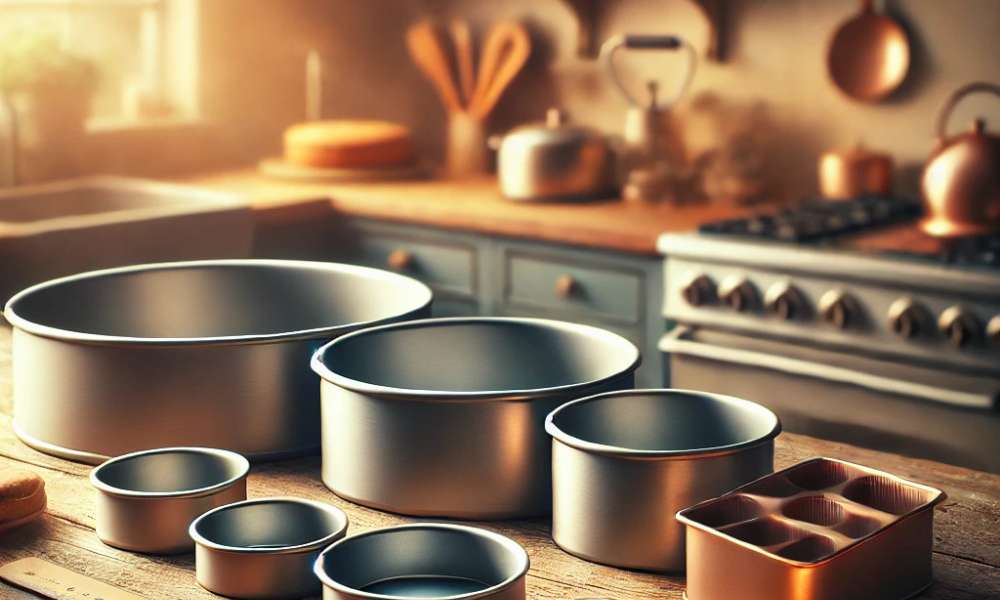Choosing the right cake pan size is a cornerstone of successful baking. Whether you’re preparing a towering layered cake or a simple sheet cake, the dimensions of your cake pan significantly influence the texture, rise, and even the flavor of your creation. Selecting the right size is not just about aesthetics but also functionality, as the pan impacts how the batter bakes and the final outcome. This article will guide you through understanding What Size Cake Pan, their importance, and practical tips to navigate your baking journey with confidence.
Understanding The Basics Of Cake Pan Sizes
Cake pans come in various sizes, from petite six-inch rounds to expansive twelve-inch rectangles. The size of the pot determines how heat distributes through the batter, affecting its baking time and consistency. Larger pots may require lower temperatures to avoid uneven baking, while smaller pots often demand precision to prevent overflow. Understanding these basics ensures your shortcake bakes evenly without compromising texture.
Choose The Right Size Cake Pan For your Cake Type
Different cakes demand specific Size Cake pans to achieve their intended structure and look. A dense-pound patty thrives in a loaf pot, while a light chiffon party calls for a round tube pot. For layered patty, uniformly sized pots ensure consistent stacking and an elegant finish. Matching the pot size to your patty type is vital for achieving a professional-quality bake.
Exploring Different Types Of Cake Pans
From classic round pans to whimsical Bundt molds, the variety of cake pots is extensive. Sheet pots are perfect for flat shortcakes or rolls, while springform pots cater to delicate cheesecakes and tortes. Specialty pots, like those for patty or mini patty, provide versatility for different occasions. Each type offers unique advantages, so understanding their uses helps elevate your baking repertoire.
What Size Cake Pan Do You Need For Different Recipes?
Recipes often specify pan sizes to ensure optimal results. A standard recipe for an eight-inch round patty won’t translate seamlessly to a nine-inch pot without adjustments. To avoid dense or overly thin shortcakes, adhere to the recommended size or learn to adapt proportions carefully. Familiarity with standard pot conversions simplifies this process, enabling more flexibility in your baking.
Adapting Recipes When You Don’t Have The Right Cake Pan Size
Sometimes, you may not have the specified pan size on hand. In such cases, adjusting the batter quantity or baking time becomes essential. Divide batter across multiple smaller pots or increase baking time for deeper pots to maintain consistency. Experimenting with these adaptations teaches invaluable skills for improvisation in the kitchen.
How Cake Pan Material Influences Your Baking
The material of your cake pan significantly affects heat conduction. Aluminum pots distribute heat evenly, ensuring uniform baking, while dark-colored pots can cause over-browning due to heat absorption. Glass pots require adjustments in temperature, as they retain heat longer than metal. Understanding material properties helps prevent mishaps and achieve desired results.
The Impact Of Depth and Shape On Cake Baking
Depth and shape play a pivotal role in determining baking times and outcomes. Deeper pans may require lower temperatures to avoid uncooked centers, while shallow pans yield thinner, crispier edges. Unusual shapes, like heart or hexagon pots, require careful batter distribution to ensure even baking.
Troubleshooting Common Problems Related To Cake Pan Sizes
Issues like uneven-rising cracked tops, or undercooked centers often stem from using incorrect pan sizes. Prevent these by aligning the batter volume with the pan’s capacity. If problems persist, reevaluate your oven temperature or invest in an oven thermometer to ensure accurate readings.
How To Store And Care For Cake Pans Of All Sizes
Proper care extends the lifespan of your cake pots. Clean pans immediately after use with warm, soapy water to prevent buildup. Avoid abrasive cleaners that can scratch surfaces, especially for non-stick pots. Stack pots by size or use dividers to prevent dents and scratches during storage.
What Size Cake Pan Is For Cupcakes Or Mini Cakes?
Cupcakes and mini patty typically require pans with smaller cavities, such as standard muffin tins or specialty molds. These smaller sizes ensure faster baking times and are ideal for portion-controlled servings. Investing in high-quality mini pans enhances results and makes clean-up a breeze.
Creative Alternatives When You Don’t Have A Cake Pan
If you find yourself without a cake pan, get creative! Use oven-safe skillets, casserole dishes, or even pie plates as substitutes. Line these with parchment paper to prevent sticking and ensure even heat distribution. Repurposing household items sparks ingenuity and minimizes disruption to your baking plans.
Secondary Uses For Cake Pans Of Different Sizes
Cake pans are not limited to baking. Use them for molding gelatin desserts, roasting vegetables, or as makeshift trays for organizing kitchen tools. Their versatility makes them an essential, multipurpose tool in every kitchen.
Popular Cake Pan Sizes For Different Cake Styles
Common sizes like the eight-inch round or nine-by-thirteen-inch rectangular pan suit a variety of patty styles. Layer shortcakes, sheet patties, and single-tiered desserts rely on these standard dimensions for predictable results. Explore larger or smaller pans for specialty patty to broaden your culinary possibilities.
Tips For Measuring Cake Pan Sizes Accurately
Accurate measurement of your cake pan is critical. Always measure the pot from the inner edge to the inner edge, excluding the lip. For depth, place a ruler inside and measure to the rim. Misjudging size can lead to overflowing batter or underbaked centers, so precision here is non-negotiable.
Conclusion
The size of your cake pan is more than a detail it’s the foundation of a successful bake. Mastering pan sizes, shapes, and materials ensures your creations rise to their full potential. Whether you’re crafting a delicate sponge or a dense fudge cake, understanding the nuances of patty pans transforms baking into an art. With these tips, you’re equipped to experiment, adapt, and enjoy the process, creating a memorable party for every occasion.
